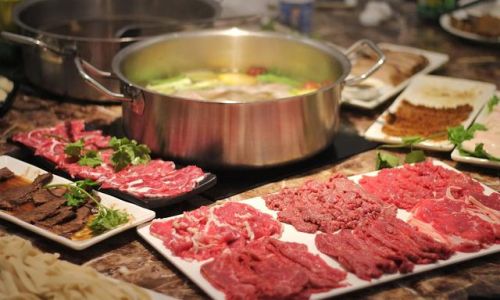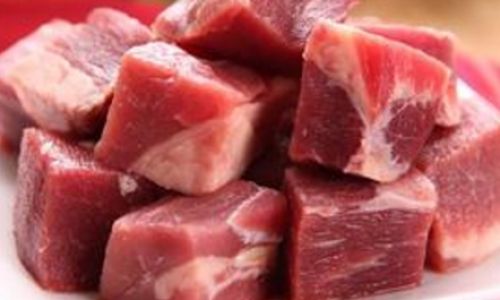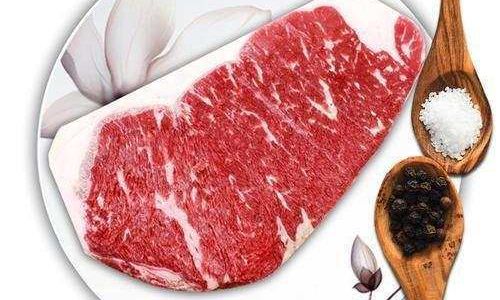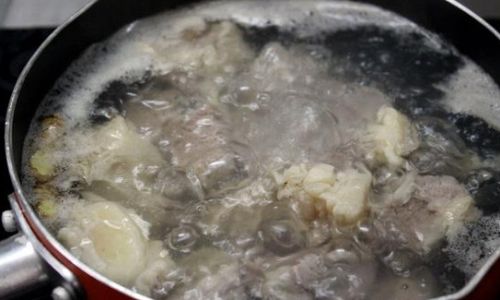Table of content
Introduction
Hot pot, a beloved culinary tradition enjoyed across Asia and beyond, is more than just a meal—it’s a communal experience that brings people together around a simmering pot of flavorful broth. At its core, the magic of hot pot lies in the harmony of ingredients, each contributing its unique texture, taste, and aroma to create a symphony of flavors. Whether you prefer a spicy Sichuan-style broth, a comforting tomato base, or a fragrant herbal concoction, the key to an unforgettable hot pot lies in selecting the right combination of ingredients. This article dives into the must-have ingredients that elevate any hot pot gathering, ensuring every bite is as delightful as the last.
Broths: The Foundation of Flavor
Before diving into ingredients, it’s crucial to acknowledge the broth’s role as the hot pot’s soul. The broth sets the tone for the entire meal, infusing ingredients with its essence as they cook. Common broth types include:

- Spicy Sichuan Broth: Made with chili oil, Sichuan peppercorns, and aromatic spices, this broth delivers a numbing, fiery kick.
- Tomato Broth: Tangy and sweet, it pairs beautifully with seafood and light proteins.
- Herbal Broth: A medicinal-inspired blend of goji berries, jujube dates, and ginseng, offering a soothing, nourishing base.
- Miso Broth: Savory and umami-rich, popular in Japanese shabu-shabu.
- Clear Chicken Broth: A mild, versatile option that highlights the natural flavors of ingredients.
Proteins: The Heart of the Meal
Proteins are the star of any hot pot, offering substance and satisfying bites. The best proteins are thinly sliced to cook quickly and absorb the broth’s flavors.
a. Meats
- Beef: Thinly sliced ribeye, sirloin, or brisket are classics. For added richness, try wagyu beef with its marbled fat.
- Lamb: A Sichuan favorite, lamb shoulder or leg slices pair perfectly with spicy broths.
- Pork: Tender pork belly or collar butterfly slices melt in the mouth. For a twist, use cured ham or bacon for smokiness.
- Chicken: Boneless thigh or breast meat, sliced paper-thin, cooks in seconds and stays juicy.
b. Seafood
- Shrimp: Fresh or frozen, head-on shrimp add briny sweetness. Devein but leave shells intact for extra flavor.
- Squid: Tubes or rings, sliced into rings or scored for tender bites.
- Fish: Mild white fish like cod or halibut, or firm salmon. Avoid delicate fish prone to overcooking.
- Mussels and Clams: Add a briny burst; discard any that don’t open during cooking.
- Fish Balls and Fish Cakes: Store-bought or homemade, these add bouncy texture.
c. Tofu and Surimi
- Silken Tofu: Creamy and delicate, it absorbs broth like a sponge.
- Fried Tofu Puffs: Airy pockets that soak up flavor; press gently to release excess oil before cooking.
- Surimi (Fish Paste): Shaped into balls, tubes, or crab sticks, offering a mild, seafood-forward bite.
Vegetables: Freshness and Crunch
Vegetables provide balance, color, and texture. Opt for a mix of leafy greens, crunchy stems, and earthy roots.

a. Leafy Greens
- Napa Cabbage: Mild and slightly sweet, it wilts beautifully in broth.
- Spinach: Baby spinach cooks quickly; larger leaves may need blanching.
- Bok Choy: Crisp stems and tender leaves offer contrasting textures.
- Watercress: Peppery and refreshing, ideal for lighter broths.
b. Mushrooms
- Enoki Mushrooms: Delicate, thread-like stems with a mild, slightly fruity taste.
- Shiitake Mushrooms: Meaty and earthy; use fresh or rehydrated dried varieties.
- King Oyster Mushrooms: Thick, meaty stems with a buttery texture.
- Wood Ear Mushrooms: Crisp and jelly-like, often sliced into strips.
c. Root Vegetables
- Daikon Radish: Sliced into rounds or half-moons, it becomes tender and sweet when cooked.
- Carrots: Julienned or sliced into coins for a hint of natural sweetness.
- Potatoes: Thinly sliced or cubed, they add starchy heft.
- Taro Root: Creamy when cooked, but handle carefully (raw taro can irritate skin).
d. Aromatics
- Green Onions: Chopped whites added to broth, greens as garnish.
- Garlic: Whole cloves or minced, for pungent depth.
- Ginger: Sliced or grated, to temper richness and add warmth.
Carbohydrates: Starchy Satisfaction
No hot pot is complete without starchy elements to soak up broth and fill you up.
a. Noodles
- Udon Noodles: Thick, chewy wheat noodles perfect for hearty broths.
- Rice Noodles: Thin or wide, they cook quickly and pair well with tomato or herbal broths.
- Glass Noodles (Mung Bean Starch): Translucent and slippery, they absorb flavors without becoming gummy.
b. Dumplings
- Wontons: Pork, shrimp, or vegetable-filled, boiled directly in the broth.
- Gyoza: Pan-fried or steamed, these add crispy texture.
- Xiao Long Bao (Soup Dumplings): A decadent treat, but handle with care to avoid bursting.
c. Rice Cakes
- Tteokbokki (Korean Rice Cakes): Chewy cylinders or logs, often sliced and added to spicy broths.
- Mochi: Sweet or savory glutinous rice cakes for a stretchy texture.
Dipping Sauces and Condiments
The right sauce can transform ingredients. Offer a variety to suit tastes:

- Sesame Sauce: Ground sesame seeds, soy sauce, vinegar, and garlic.
- Soy-Based Sauce: Light soy sauce, chili oil, cilantro, and lime.
- Spicy Miso Sauce: Miso paste, gochujang, rice vinegar, and sesame oil.
- Garlic Yogurt Sauce: Greek yogurt, minced garlic, and dill for a cooling contrast.
Regional Variations and Specialty Ingredients
Hot pot styles vary wildly by region, each with unique ingredients:
- Sichuan Hot Pot: Offal like tripe, duck blood, and pig’s brain for adventurous eaters.
- Cantonese Hot Pot: Seafood balls, abalone, and fresh crab for luxury.
- Korean Army Stew (Budae Jjigae): Spam, ramen noodles, and American cheese for a fusion twist.
- Japanese Shabu-Shabu: Premium beef, tofu, and udon noodles in a kombu-based broth.
Tips for the Perfect Hot Pot Experience
- Prep Ahead: Slice meats and veggies in advance to streamline cooking.
- Temperature Control: Use a portable burner to maintain broth temperature; avoid boiling too vigorously.
- Cooking Order: Start with meats and seafood, then vegetables, and save noodles/dumplings for last to avoid bloating the broth.
- Customization: Label bowls for mild vs. spicy preferences, or set up a DIY sauce bar.
- Leftovers: Strain and store broth separately from ingredients to prevent sogginess.
Vegetarian and Vegan Adaptations
Hot pot is incredibly adaptable. For plant-based diets:

- Proteins: Use seitan, tempeh, or store-bought vegan “meats.”
- Broth: Mushroom-based or miso broths with kombu for umami.
- Cheese Alternatives: Vegan mozzarella or tofu-based spreads.
Conclusion
The beauty of hot pot lies in its flexibility—a canvas for creativity and shared joy. By curating a mix of proteins, vegetables, and starches, you cater to diverse palates while honoring tradition. Whether you’re a purist sticking to classics or an adventurer experimenting with quirky combinations, the key is to gather loved ones, sip broth, and savor the art of communal dining. So fire up the pot, arrange your ingredients, and let the feast begin!





0 comments